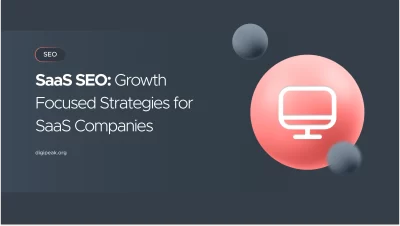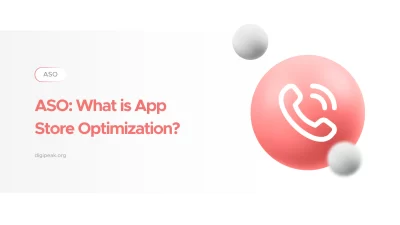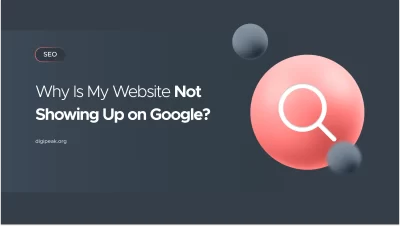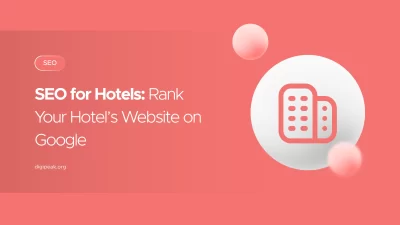
SaaS SEO: Growth-Focused Strategies for SaaS Companies
In today's digital world, SEO is no longer a luxury but a necessity for SaaS …
SEO -
18/02/2025 -
16 dk okuma
Stay up to date with Peakers
Global e-commerce sales reached $6.86 trillion in 2025, and they are expected to hit $8 trillion by 2027.
This means that the level of competition is increasing, along with the growing opportunities for online retail businesses.
Succeeding in the world of e-commerce is not just about offering great products. In today’s digital market, it’s crucial for your customers to be able to find you. Combining the powerful infrastructure of Shopify with the nuances of search engine optimization (SEO) presents a golden opportunity to put your online store on the radar of potential customers.
However, Shopify SEO requires unique strategies, different from standard SEO techniques. In this article, we will reveal the secrets of increasing your store’s visibility on the Shopify platform and explore ways to multiply your sales. If you’re ready, let’s take a look at the magical world of Shopify SEO.
Shopify is a powerful SaaS platform that allows business owners of all sizes to set up and manage their online e-commerce stores across various channels.
For example, the platform lets you sell directly on social media platforms like Facebook and Instagram, integrate with large marketplaces like Amazon and eBay, and even sell in person through a point of sale (POS) system.
Shopify also allows you to add e-commerce functionality to any website or blog via the Shopify Buy Button, making it easier to convert existing traffic into sales.
In general, if you’re looking for an all-in-one e-commerce solution, Shopify is a good choice. Shopify plans include features like product catalogs, payment processing, shipping, inventory management, and even credits for some vendors.
Shopify SEO refers to the process of maximizing the organic search visibility of your Shopify store in order to attract more customers to your business.
This means optimizing your website so it appears higher on search engine result pages (SERPs) when people search for the types of products you sell.
It involves optimizing product descriptions with the right keywords, improving the layout of your site, ensuring your store works well on mobile devices, and increasing your site’s load speed. It also includes building quality backlinks to increase your site’s authority, creating relevant content to attract more visitors, and implementing structured data to help your products stand out in search results.
Yes, SEO can be done on Shopify. Shopify provides a range of built-in SEO features and tools to help you optimize your online store for higher rankings on search engine results pages.
Shopify provides a solid platform for doing SEO. By taking advantage of its built-in features and following best practices, you can significantly increase your store’s visibility and attract more traffic.
Shopify SEO is considered a subset of e-commerce SEO and is the most widely used CMS.
Now, let’s take a look at our step-by-step guide on how to implement it.
In our Shopify SEO guide, we will walk you through the basic steps you need to take to ensure your store ranks higher in search results. Use the following Shopify SEO checklist to drive organic traffic and increase sales in your store.
When you set up a Shopify store, you’re given a default “myshopify.com” domain — for example, “store.myshopify.com.”
However, search engines and users tend to trust custom domains more than standard Shopify domains, and using them can lead to better performance and higher click-through rates in search results.
All website owners serious about search engine optimization should register their sites with Google Search Console and Bing Webmaster Tools, regardless of the platform they use to build their site.
By registering your Shopify store with these services, you notify Google and Bing that your store exists and ensure it gets indexed.
Search Console and Bing Webmaster Tools will also notify you about any technical issues that might prevent your site from being properly crawled.
Once you’ve registered your Shopify site with Google Search Console and Bing Webmaster Tools, you need to submit an XML sitemap to both services. This helps both services index your site correctly and quickly.
Shopify automatically generates a sitemap for you, and the URL for your store’s sitemap is:
You can submit this sitemap to both Search Console and Bing Webmaster Tools by going to the ‘Sitemaps’ section in the dashboard.
Everything is fairly simple, but if you need further help with this, check out Shopify’s official support video on the topic.
Expert Tip: Don’t Forget Google My Business If you’re using your e-commerce store for both online and physical sales, make sure you also register it with Google My Business in addition to Search Console.
This will ensure your site is listed on Google Maps and becomes more visible in search results. This is also an essential step for Local SEO.
Page speed is a ranking signal used by search engines like Google to rank websites in search results. Fast-loading sites are prioritized over slower ones.
(Faster sites lead to a better user experience, which is something that Google’s search algorithms love and reward).
Now, your options for optimizing page speed on Shopify are somewhat limited since you have to use Shopify’s servers and templates (though they are very good), and you don’t have detailed control over the load speed.
However, there are things you can do to ensure your Shopify site loads as fast as possible, such as:
Shopify has recently introduced a ‘store speed’ report for vendors, which you can use to check how your store compares to others in terms of speed.
To access it, go to your Shopify dashboard’s Analytics > Reports section and select ‘Online Store Speed’ from the available reports list.
You can also use Google’s PageSpeed Insights tool to analyze your Shopify store’s page speed in more detail and get suggestions on how to improve load times.
One of the best ways to improve your Shopify store’s SERP rankings is to ensure your content and products contain the keywords that people are actually searching for. To do this, you need to conduct keyword research.
Keyword research typically involves gathering three key pieces of information:
Once you have these three pieces of information, you can determine which keywords you’ll use to optimize your content or the type of content you need to create in the first place.
The reason for this is that you have enough data to find the ‘sweet spot’ — keywords that are popular enough to generate a reasonable amount of traffic, but are not overly competitive due to many other sites dominating the search results.
To professionally access this information, you need to use a specialized keyword research tool like Semrush or Ahrefs. These tools allow you to enter keywords and see statistics for each one, along with many other helpful details, such as lists of competitor sites that are currently ranking well for your chosen keywords, suggested alternative keywords, and country-specific search results.
Once you’ve completed your keyword research, it’s time to look at more technical aspects to ensure your Shopify store performs well in searches for the keywords you’ve selected.
One of the most important elements of a web page is the title. Search engines treat ‘title tags’ as important pieces of information when determining how to categorize and rank your content. Your title will also appear as the largest component of a search result (and at the top of browser windows)
Make sure your Shopify page and blog post titles are never vague and always start with your target keyword (the phrase you want to rank for in search results).
There are two different processes for editing page titles in Shopify: one for your homepage and another for all other page types. Let’s look at both in turn.
Ignoring headings is a common mistake made by website owners who build and update their online stores using e-commerce platforms like Shopify.
Instead of properly applying headings (Heading 1, Heading 2, Heading 3, etc.) — as a professional developer or web admin would do — they often add bold or capitalized text to break up their content.
This can lead to several issues:
Adding headings and subheadings on Shopify is incredibly easy: When editing a page or product description, simply highlight a piece of text and then select the desired heading from the formatting dropdown menu.
To do this, just click on the large ‘A’ icon, as shown in the screenshot below.
Headings on Shopify are numbered from 1 to 6.
Your Heading 1 (H1) is the most important because search engines use it — along with the page title — as the primary way to rank the page. Therefore, it should always include your target keyword and ideally start with it.
It’s also a good idea to add a few H2 and H3 headings containing relevant keywords to your pages and product descriptions.
Meta descriptions (also known as ‘meta tags’) are short summaries of web pages that appear beneath the clickable blue links on a search engine results page.
How to write the right meta description
Although Google states that they are not a ranking factor, a well-written meta description can lead to more clicks on your website, thus improving a page’s click-through rate (CTR).

While there is some debate on this topic, many SEO experts believe that the click-through rate of pages in search results is a ranking factor. Therefore, it’s important to get your meta descriptions right (if for nothing else, more clicks usually equal more sales!).
Your Shopify product and page meta descriptions should be:
A common way to speed up the process of adding products to your Shopify store is by using the ‘Duplicate Product’ option.
While this is undoubtedly a useful way to add a new product to your store, it can accidentally (or lazily) create multiple similar — or even entirely copied — product titles and descriptions.
This can confuse search engines and is not good for your visitors either. Duplicate content can lead to lower performance in search results, so always try to make your product titles and descriptions as unique as possible.
Search engine algorithms don’t just look at the words on your Shopify store when indexing; they also take into account your images.
To do this, they examine two pieces of data associated with your images:
Let’s first focus on alt text.
There are three key reasons to add alt text (also known as alt descriptions or alt tags) to your images:
You should aim to add alt text that works for both screen readers and search engines; provide a description that includes your target keywords, but is still perfectly understandable to anyone using a screen reader to access your content.
Editing alt text in Shopify is really easy, but the process can vary slightly depending on the type of content you’re working on.
Using SEO-friendly URLs is something Google recommends. Clean URLs are short, simple, and easy to understand.
Therefore, always ensure that the URLs of your Shopify store are as clear as possible and contain a focus keyword. This will help both search engines and people understand what your content is about.
Changing the URLs of pages that aren’t currently performing well in organic search results usually isn’t a problem. However, if you’re considering changing the URL of a page that already ranks highly, proceed with more caution.
The reason is that a high-ranking, high-traffic page likely has many backlinks, and unless you create a redirect from the old URL to the new one, those backlinks will be useless.
Rich snippets (or Structured Data) are pieces of ‘structured data’ that can be added to your content to help both searchers and search engines understand what a page is about and are an important part of how your website performs in search results.
Rich snippets contain visual cues about the content of a product, page, or post, such as star ratings, author, date, prices, pros and cons, etc.
These appear immediately after the meta description in the search result, as seen in the example below:

As you can see, the search result above is enhanced with rich snippets, which include a restaurant’s star rating, the number of reviews it received, and the price range of the meals.
Search engines love rich snippets because they provide an additional data source that can be used to better categorize and index content.
People love them because they add more relevance and context to search results (which can lead to more clicks, and that may result in algorithms showing a result more frequently).
Rich snippets are typically generated by adding ‘Schema Markup.’ This is HTML code containing tags defined by Schema.org (a joint project aimed at helping webmasters of Google, Yahoo!, Bing, and Yandex provide more accurate information to search engines).
There are several ways to add rich snippets to a Shopify store. The first is by manually adding some ‘data markup’ code to your Shopify templates.
The second approach is to use rich snippet applications, and there are plenty of these available in the Shopify App Store. The best one is Schema Plus for SEO.
Many Shopify users get so focused on their product catalogs (images, descriptions, keywords, etc.) that they forget an essential aspect of SEO: creating great content, often in the form of blog posts.
Sites that publish in-depth and informative blog posts on topics people are interested in tend to perform better in search results.
Important: Before dedicating time to writing great content, it’s essential to do some keyword research.
This will help you gain a solid understanding of niche topics people are actively searching for and how difficult it will be to rank in a particular niche.
A Shopify SEO agency provides professional services to help e-commerce sites on the Shopify platform achieve better rankings in search engines. These agencies develop SEO (Search Engine Optimization) strategies for your site, make technical SEO improvements, provide content optimization, and create keyword strategies to reach your target audience. Since Shopify e-commerce sites often require customized SEO solutions, agencies focus on using platform-specific knowledge and best practices to achieve more effective results.
Services offered by a Shopify SEO agency include on-site and off-site SEO work, speed optimization, mobile-friendly designs, content marketing strategies, backlink building, and local SEO. These agencies aim to increase organic traffic, improve conversion rates, and ultimately boost sales. They also perform continuous analysis and reporting to measure the effectiveness of SEO strategies and suggest improvements when necessary.
Primarily, Shopify SEO agencies focus on:
Choosing Digipeak as your Shopify SEO agency is a strategic step toward growing your e-commerce site. Digipeak, focused on the Shopify platform and implementing the latest SEO techniques in the industry, aims to deliver sustainable and organic improvements in your site’s Google rankings. With deep knowledge of Shopify, the Digipeak team combines the platform’s tools and features with the most efficient SEO strategies. This improves the user experience and helps your site quickly rise in both search engine rankings and conversion rates.
Digipeak doesn’t stop at just technical SEO; it also specializes in important areas like content strategies, backlink building, and speed optimization. It offers solutions tailored to both local and international SEO needs, making it easier for you to reach your target audience. Moreover, with a continuous performance tracking and optimization approach, it constantly enhances the effectiveness of your SEO strategies. As a result, working with Digipeak ensures that your Shopify store becomes a more visible, user-friendly, and sales-driven platform.
The main services provided by our expert team in Shopify SEO include:
The tips and best practices above will certainly help improve your Shopify store’s performance in search results, but there is much more you can do to tackle SEO issues and help your Shopify store rank higher on Google.
If you’d like to learn more about search engine optimization or ensure that your store performs well in search results, feel free to reach out through our contact channels and receive our SEO services. Our expert team will thoroughly review your Shopify website and offer expertise in both SEO and site design.
Get an Offer


Join Us So You Don't
Miss Out on Digital Marketing News!
Join the Digipeak Newsletter.
Related Posts

In today's digital world, SEO is no longer a luxury but a necessity for SaaS …

App Store Optimization, or ASO for short, is the process of optimizing an app or …

Learn the most common reasons why your site isn’t showing up on Google, from crawling …

In the digital age, not having a website for your hotel is one of the …